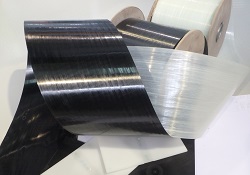Improved simulation of nuclear quantum effects
At the quantum level, materials behave in a way that is substantially different to that in the everyday, Newtonian world. This can affect the manner in materials and devices that contain hydrogen or other light atoms function. Computer-based simulation techniques are used to model this behaviour.For condensed-phase systems, density functional theory (DFT) provides an acceptably accurate framework for looking at the quantum electronic structure. DFT is, however, costly. Combining DFT simulations with path integral molecular dynamics (PIMD), which is a convenient approach to deviations from Newtonian behaviour, is desirable in certain cases. The problem is that using the two together is both highly expensive and time-consuming.The 'Fast and accurate simulation of nuclear quantum effects in ab-initio molecular dynamics by a generalised Langevin equation' (NQEAIMD) project aimed to make PIMD simulations less costly. This was to facilitate a combination of nuclear quantum effects (NQEs) with DFT simulations.The researchers began by applying a coloured-noise, Generalised Langevin Equation (GLE) to a PIMD simulation. When they had established this methodology, they studied the impact of NQEs on the properties of water. Then they extended it to more complex problems in collaboration with experimental groups.The team developed a hybrid technique called PI+GLE, which reduces the cost to one-fifth or less. PI+GLE was then improved to produce the PIGLET method, which could make it a routine matter to include NQEs in ab-initio molecular dynamics. To this end, the researchers also developed i-PI, an interface using electronic structure codes, and released it as open-source code. The results of NQEAIMD will have an impact on computer simulation work by other scientists. Simulations should be more accurate in the case of materials and chemicals that contain light atoms, including hydrogen. In turn, this could help the fulfilment of the potential of computer aided materials design, leading to better batteries, enzymes, fuel cells and other devices







